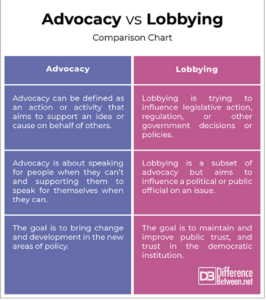Curious what our SPRINT-iProv Fellow, Kevin Carter, has been doing this summer in his work to formalize RIEEA’s advocacy approach? Read on to hear about some of what he’s done in his short time with RIEEA, shared in his own words!
By Kevin Carter
Drafting an advocacy policy for RIEEA is one of the core deliverables of my internship, but I didn’t begin to work on it until my last month of work arrived. This is partially due to the fact that I was preoccupied with other tasks and projects during the first two months, like conducting interviews and research to learn about the Green Bond and curating information about environmental justice community organizations in Rhode Island. More importantly, though, this timing allowed me to learn about RIEEA’s advocacy as well as the advocacy work done by other state affiliates, organizational members, and local environmental organizations, equipping me with essential knowledge for the advocacy policy draft.

Starting the draft was initially a daunting task, but I was able to get assistance from my supervisor, Jeanine Silversmith, and advocacy committee member Greg Gerritt who helped inform me of what the advocacy policy should address. This led me to split the advocacy policy into three sections: one for legislative policy, another for legal concerns, and the last for community advocacy. Altogether, they serve to paint a vivid picture of how RIEEA will devise and conduct its advocacy efforts.
For the legislative policy section, I consulted Jeanine to help me discern how RIEEA’s mission translated into core legislative priorities, and she helped me decide on four focal points for RIEEA’s legislative advocacy: education, access, awareness, and environmental justice. For each priority, I included a short and concise description of what RIEEA hoped to accomplish by advocating for supporting legislation. The language in these descriptions borrows from the language featured on the RIEEA website, using familiar terminology that evokes the mission and identity of the organization. The second part of this section is inspired by the Rhode Island Land Trust Council’s legislation involvement document, and it consists of a short list of questions that are meant to assess how relevant the legislation is to RIEEA, and to what extent RIEEA can make an impact on it through its advocacy. For the third and final component of this section, I evaluated the opportunities for RIEEA advocacy on federal, state, and local levels based on the research and work I’ve done throughout my internship. This evaluation helped identify some priority items for RIEEA’s legislative agenda that align with the organization’s past advocacy efforts.

A crucial aspect of nonprofit legislative advocacy is adhering to and being educated on the legal restrictions, so I included an informational section between the legislative and community advocacy sections to serve as a salient reminder of the legal nuance that must be understood when doing this work. I incorporated two infographics, including one from the Colorado Alliance for Environmental Education advocacy document, and supplemented the images with points from RIEEA’s website regarding the “do’s and don’ts” of nonprofit advocacy. The second infographic delineates the differences between advocacy and lobbying and can be referenced by members when they are confused about whether the action is an appropriate advocacy effort for RIEEA.
Lastly, I created the community advocacy section to address grassroots-level advocacy. This section borrowed from the language of the strategic plan and honed in on three focal points: listening to and building authentic relationships with individuals and groups not historically represented in RIEEA, supporting community-based environmental justice groups, and investing in youth leadership within environmental spaces. Based on discussions with Jeanine, I was able to add a list of action items under each community advocacy approach that underscored how RIEEA can and has engaged in this type of work. These included collaborating with groups to co-create programs, lobbying on behalf of EJ communities, and hosting the annual youth leadership retreat to name a few.
In order to create this draft, I had to first understand what advocacy efforts RIEEA was involved in, then learn how its organizational goals translate into potential advocacy efforts, and tie the two together using language from RIEEA’s website and internal documents. This process was largely informed by the conversations I had with people who are involved with RIEEA advocacy work. The structure of the report was informed by the advocacy policy documents of member organizations and other state affiliates. When everything is finished, the draft will be reviewed, edited, and adopted by the RIEEA Board. I’m looking forward to seeing where this draft will go and the impact it will have on RIEEA’s advocacy efforts.
If you’d like to learn more about the process that went into making the advocacy policy draft or the work I did during my internship, please reach out to me at kevin_carter@brown.edu